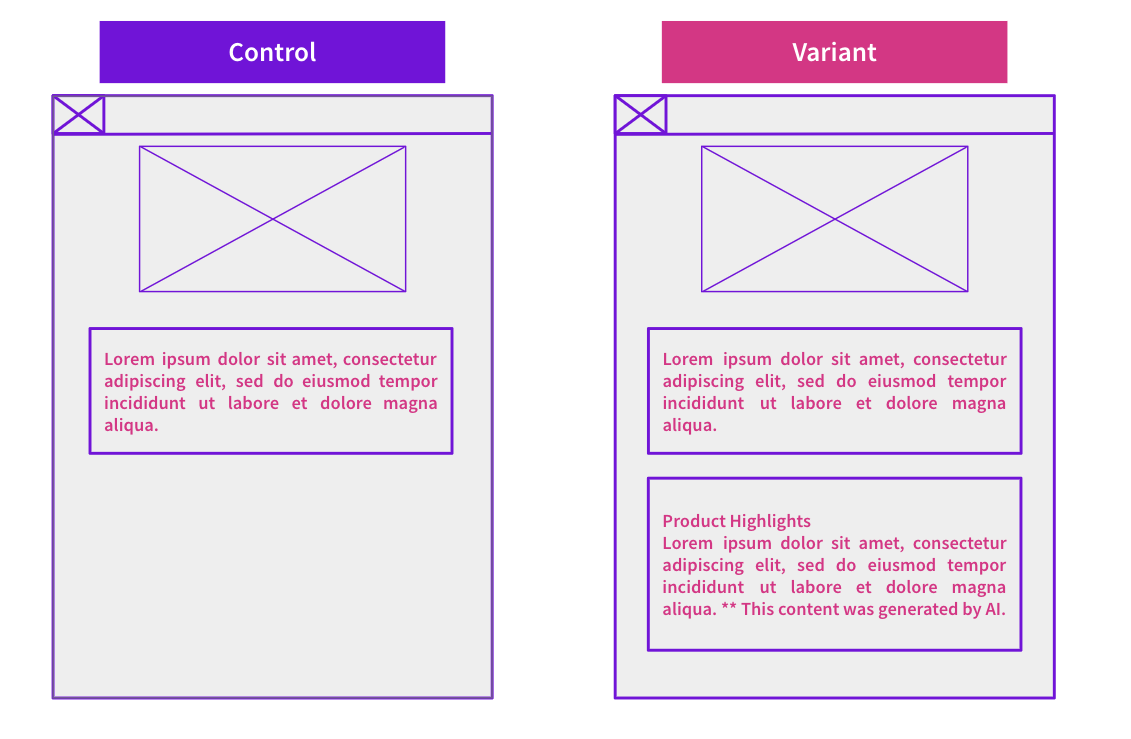Start here: how our SEO split tests work
If you aren't familiar with the fundamentals of how we run controlled SEO experiments that form the basis of all our case studies, then you might find it useful to start by reading the explanation at the end of this article before digesting the details of the case study below. If you'd like to get a new case study by email every two weeks, just enter your email address here.
In this week’s #SPQuiz, we asked our LinkedIn and X (formerly Twitter) followers if the placement of breadcrumbs on a webpage would affect SEO performance.
Poll Results
The poll results revealed that opinions were split. While some believed breadcrumb placement could influence SEO performance, others thought the position on the page was unlikely to have any measurable impact, as long as breadcrumbs were present and correctly marked up.
The Case Study
Breadcrumbs are a navigational element that helps users understand their position within a website's hierarchy. They provide a clear trail of how someone arrived on a page (e.g. Home > Category > Subcategory > Product) and help search engines understand content hierarchy. They also support SEO by reinforcing internal linking, especially when enhanced with structured data.
While the presence of breadcrumbs is often recommended, it's less clear whether their placement on the page matters to search engines or users. The industry standard is to place them near the top, just beneath the main navigation. But we wanted to test whether position alone - top versus bottom - has any measurable impact on SEO, especially since previous tests have shown that even small breadcrumb adjustments can influence rankings and traffic.
What was changed
In one of the tests, a customer moved the breadcrumbs to the top of the page, above the main heading. In the other, a different customer tested placing them at the bottom of the page, just above the footer. In both cases, all other elements - markup, structure, and visual presentation - remained unchanged. The goal was to isolate the impact of placement alone.

Results
The results of both tests were inconclusive. Neither site saw a statistically significant change in organic performance as a result of moving the breadcrumbs.
Breadcrumbs at the top:
 Breadcrumbs at the bottom:
Breadcrumbs at the bottom:

This suggests that, while breadcrumbs are still valuable for SEO, their placement on the page may not carry meaningful weight. One possible explanation is that search engines rely more heavily on structured data to interpret breadcrumb information, rather than where that information is visually positioned on the page. Another is that user interaction with breadcrumb links, regardless of their placement, does not consistently influence behavioural signals in a way that affects rankings.
So, while having breadcrumbs and structuring them well is still considered best practice, these experiments indicate that placement alone may not be a strong lever for performance change.
As always, we recommend testing in your own context. What works in one scenario may not translate across different industries, site types, or user behaviours.
That’s why we run experiments like this at SearchPilot: because SEO outcomes can be counterintuitive. Seemingly logical improvements don’t always translate into measurable gains, which is why we rely on testing rather than assumptions.
Want more insights like this? Join our case study mailing list or get in touch to learn about our SEO A/B testing platform.
How our SEO split tests work
The most important thing to know is that our case studies are based on controlled experiments with control and variant pages:
- By detecting changes in performance of the variant pages compared to the control, we know that the measured effect was not caused by seasonality, sitewide changes, Google algorithm updates, competitor changes, or any other external impact.
- The statistical analysis compares the actual outcome to a forecast, and comes with a confidence interval so we know how certain we are the effect is real.
- We measure the impact on organic traffic in order to capture changes to rankings and/or changes to clickthrough rate (more here).
Read more about how SEO testing works or get a demo of the SearchPilot platform.




